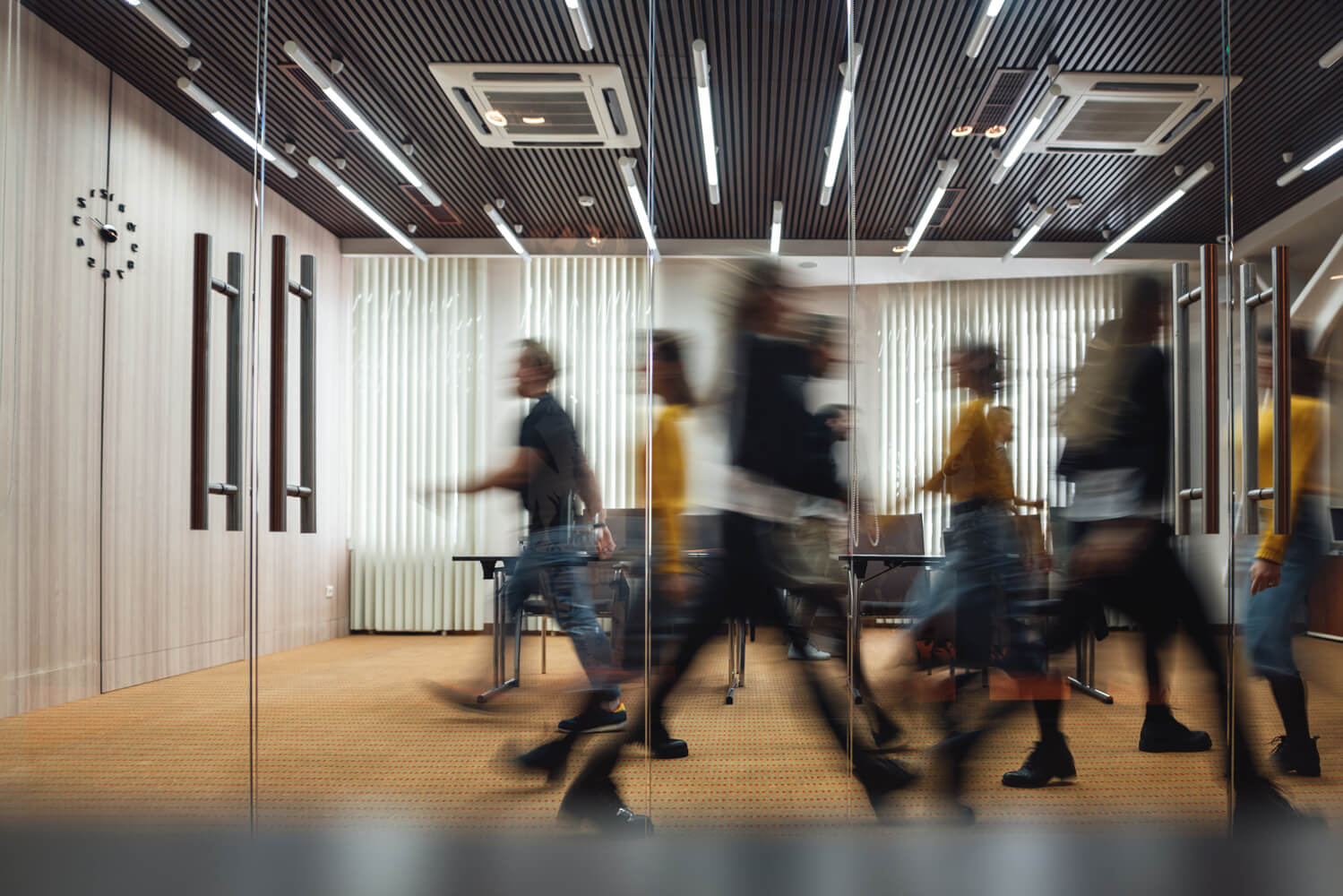Beyond the Noise: Transforming Existing Buildings with Acoustic Retrofits


Retrofitting for better acoustics is more than just an upgrade; it’s about transforming spaces into environments that support comfort, productivity, and well-being. At BranchPattern, we believe that every space should work in harmony with its occupants, and acoustics play a critical role in that experience. The most common acoustic challenges in existing buildings can be grouped into three key areas: room acoustics, background noise control, and sound isolation. Often, these issues stem from outdated construction methods and materials that fail to meet modern sound standards.
Room Acoustics: The interaction of sound with the materials and surfaces within a space can significantly affect how sound is perceived. Hard surfaces like walls, floors, and ceilings create echoes and muddle communication, especially in large, open areas like lobbies, auditoriums, and conference rooms. This problem often goes unnoticed until it disrupts a meeting or diminishes the user experience.
Background Noise Control: Noise pollution is an unwelcome guest in many buildings, whether from external sources like traffic and construction or internal sources such as HVAC systems, office equipment, and everyday occupant activity. Left unchecked, this noise can lead to discomfort, disrupt focus, and reduce productivity, ultimately affecting the overall occupant experience.
Sound Isolation: Sound can easily travel between rooms or floors if there is insufficient insulation or gaps and leaks in the building’s envelope. This is especially problematic in settings where privacy is paramount, such as offices, healthcare facilities, and residential buildings. It’s not just about noise—poor sound isolation can compromise confidentiality and comfort.
Acoustic problems go beyond mere annoyance. They can impact mental well-being, hinder communication, and even influence the overall quality of life for occupants. In work environments, poor acoustics can lead to higher stress levels, reduced concentration, decreased productivity, and increased employee turnover. In residential settings, they can affect the quality of life and overall well-being that residents expect.
Initial Assessment and Planning
Retrofitting for better acoustics starts with understanding the unique challenges of each space. Conducting an acoustic survey is the first step, a crucial process that dives into the nuances of the current sound environment. Acoustic consultants measure various parameters such as ambient noise levels, reverberation times, and sound transmission paths, alongside assessing the materials and structural elements to determine their acoustic properties.
The survey results tell a story that helps building owners and facility managers visualize a path forward, prioritizing the most critical areas for improvement. For example, the survey might highlight that certain walls lack proper insulation or identify a noisy HVAC system as a primary disruptor. Armed with these insights, owners can make informed decisions, investing strategically in the solutions that will have the most significant impact.
An acoustic survey also sets the stage for defining clear, achievable acoustic performance goals, and helps to ensure funds are allocated efficiently for the retrofit. Whether it’s adding soundproofing to high-traffic areas or optimizing acoustics in spaces with high reverberation, these targeted improvements enhance the overall acoustic environment, creating better experiences for occupants.
Strategies for Improving Acoustics
Retrofitting is often about balancing ideal solutions with practical constraints like structural limitations or budget. At BranchPattern, we work closely with clients to explore feasible options that enhance comfort and functionality without compromising the building’s character. While achieving specific noise reduction targets for standards like LEED might be out of reach, implementing practical measures such as adding sound-absorbing materials, upgrading seals on doors and windows, and optimizing HVAC systems can yield noticeable improvements.
In our experience, even small changes can dramatically alter the acoustic environment. By focusing on what’s achievable, we help our clients create spaces that feel quieter, more comfortable, and aligned with the needs of their occupants.
Historical Buildings and Unique Acoustic Challenges
Retrofitting historical buildings presents a distinct set of challenges, where preserving aesthetics often takes precedence. A perfect example is the Senate chamber at Wisconsin’s State Capitol in Madison, a highly reverberant space that makes it difficult to hear speakers clearly. Adding acoustic materials could interfere with the room’s historical integrity, diminishing the sense of grandeur and pride it evokes.
In such cases, electronic solutions can provide effective alternatives while respecting the heritage of a space. In the Senate chamber, a system of microphones and small speakers at each seat was implemented. The design was meticulously configured so the audio mimics the natural voice of the speaking Senator, significantly improving speech intelligibility without altering the room’s appearance. It’s a reminder that acoustics isn’t just about managing sound; it’s about honoring the spirit of a space.
Conclusion
Retrofitting existing buildings for better acoustics requires a thoughtful balance of technical expertise, creativity, and respect for the built environment. By conducting thorough assessments and embracing innovative strategies, it’s possible for facility managers to turn challenging acoustical environments into spaces that support the needs and comfort of their occupants. At BranchPattern, we see every retrofit as an opportunity to create more meaningful and enjoyable experiences, fostering environments where people can connect, collaborate, and thrive.






View More Resources
Benefit from our expertise


